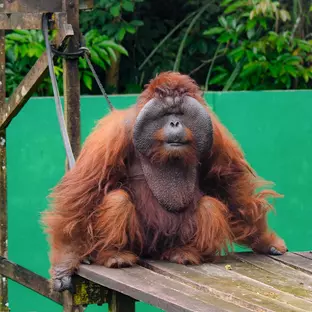The IAR team in Indonesia has successfully reintroduced 8 endangered slow lorises back into the wild after they had completed their rehabilitation.
One year on from the launch of their highly effective social media campaign “Tickling is Torture” which aimed to stop people keeping slow lorises as pets, the team were able to release 8 of the primates into the Protected Forest of Batutegi, Tanggamus District, Lampung.
All 8 were confiscated by the Forest Department back in 2015 and were then taken to the IAR centre to begin their rehabilitation. The group consisted of four males: Tamper, Tyson, Armstrong, and Partos, and four females: Poppy, Cute, Willi and Dandelion.
As soon as they arrived at the centre, the group of small, nocturnal primates were taken into quarantine to undergo a series of medical tests to cure any health issues they may have had, and to prevent any potential diseases from spreading to other slow lorises at the centre.
After a short period of time in quarantine, the slow lorises were given the all clear to start their rehabilitation programme. “Based on the latest medical examinations, the health of the slow lorises is improving all the time, with no signs that they are carrying any diseases. The condition of their teeth and bones is also good,” said Dr Wendi Prameswari, Animal Care Manager at the centre.
Dr Prameswari also explained that normally it takes a long time to rehabilitate primates to a state where they are able to be released. Most rescued slow lorises suffer from serious conditions such as dehydration and malnutrition alongside severe levels of stress that have only been exacerbated by them having their teeth cut out.
Fortunately, the 8 slow lorises in this group were declared healthy and able to be released.
The first stage of the release process involved moving the lorises to a habituation cage set up in Batutegi Forest. This temporary home is an enclosed area of the forest containing a variety of trees to provide the lorises with food and shelter. They spend about a month in the habituation cage, adapting to their new natural habitat and foraging for their own fresh food.
Bobby Muhidin, Coordinator of Survey Release Monitoring (SRM), said that his team will continue to monitor the slow lorises while they were in the habituation cage. “If they display positive behaviours—such as finding their own food, adapting to their wild environment and generally thriving—then we can release them,” he explains.
We are looking forward to hearing all about how the slow lorises get on out in the wild, and as soon as we hear something we will let you know too, but for now why not check out some of the incredible work IAR are doing!











